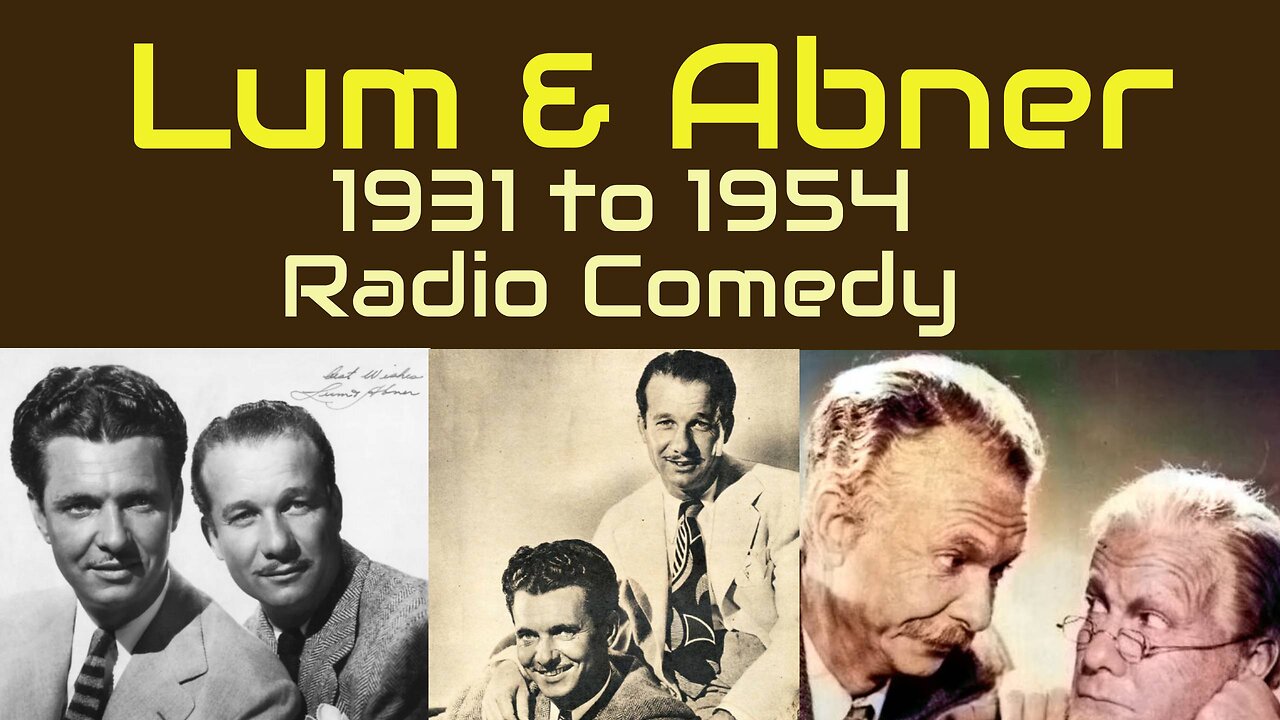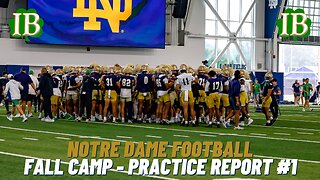Premium Only Content

Lum & Abner - 35-02-06 (38) Election For President Of Jotem Down Store
Lum and Abner was an American network radio comedy program created by Chester Lauck and Norris Goff that was aired from 1931 to 1954. Modeled on life in the small town of Waters, Arkansas, near where Lauck and Goff grew up, the show proved immensely popular. In 1936, Waters changed its name to Pine Ridge after the show's fictional town.
The series was created by co-stars Chester Lauck (who played Columbus "Lum" Edwards) and Norris Goff (Abner Peabody). Lum always pronounced his own name as Ed'erds and was very annoyed if Abner or anyone brought up his full first name. The two characters performed as a double act, with Lum generally playing the straight man to Abner's attempts to break free from Lum's influence. As co-owners of the Jot 'em Down Store in the fictional town of Pine Ridge, Arkansas, the pair are constantly stumbling upon moneymaking ideas only to find themselves fleeced by nemesis Squire Skimp, before finally finding a way to redeem themselves. Lum and Abner played the hillbilly theme with deceptive cleverness.
In addition to the title characters, Lauck also played Grandpappy Spears and Cedric Weehunt while Goff played Abner, Squire Skimp, Llewelyn "Mousey" Grey, Dick Huddleston, and most of the other characters.
Lum and Abner, like most sitcoms of the era, had a live house band, in this case a string band in keeping with the show's hillbilly humor. Marshall Jones, before his adoption of the "Grandpa" persona that made him famous years later, was among the band's first members.
Episode status
The team broadcast more than 5,000 shows, of which over 1,630 episodes exist today. The archive is extensive between 1935 and 1948, a rarity for 15-minute shows that were typically never recorded (most of its contemporary daytime programs have fewer than 100 episodes remaining). As with most old-time radio shows, very little pre-1935 content (in this case, two episodes) survive. Only a handful of post-1948 programs, and some of the 1953–54 revival, have survived; most recordings of those shows are believed to have been destroyed.
-

JuicyJohns
5 hours ago $2.43 earned🟢#1 REBIRTH PLAYER 10.2+ KD🟢$500 GIVEAWAY SATURDAY!
55K3 -
 LIVE
LIVE
IrishBreakdown
1 hour agoNotre Dame Fall Camp Practice Report
52 watching -
 1:04:08
1:04:08
Timcast
2 hours agoPelosi MELTS DOWN After Trump Accuses Her Of INSIDER TADING, PELOSI ACT Moves Forward
111K57 -
 1:54:53
1:54:53
Steven Crowder
4 hours ago🔴 Is the Sig Sauer P320 Killing People & Trump Wins the Trade War: Guest Brandon Herrera
249K207 -
 1:09:57
1:09:57
Rebel News
1 hour agoCanada to recognize Palestine, US trade deadline looms, Charter-protected bike lanes | Rebel Roundup
4.22K2 -
 DVR
DVR
TheAlecLaceShow
2 hours agoGuest: Roger Stone | Kash Patel Finds Hoax Docs in Secret FBI Room | The Alec Lace Show
5.19K2 -
 1:43:37
1:43:37
The Rubin Report
3 hours agoWhy I’m Taking a Break
38.2K35 -
 1:36:22
1:36:22
The Mel K Show
3 hours agoMORNINGS WITH MEL K -Truth Tsunami Alert: Panic in DC! 7-31-25
17.7K7 -
 2:08:44
2:08:44
Benny Johnson
4 hours ago🚨CIA Whistleblower SPEAKS! Tulsi Gabbard Joins LIVE to Expose New Obama-Gate BOMBSHELL: 'Burn Bags'
80.1K99 -
 1:20:39
1:20:39
The Shannon Joy Show
3 hours ago🔥🔥Trump To Pardon Sean ‘Diddy’ Combs? Live Exclusive with Child Sex Trafficking Expert & Advocate Dani Pinter! 🔥🔥
26.4K4